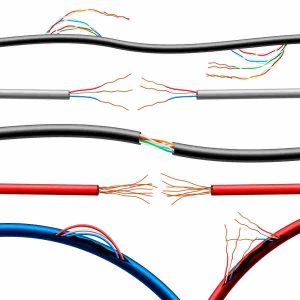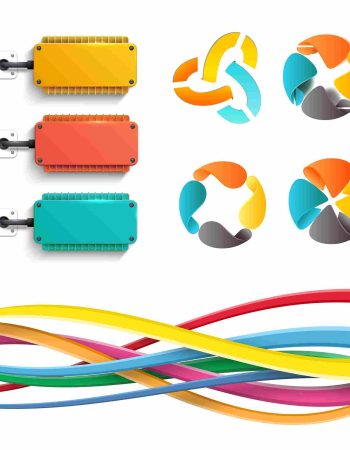In today’s fast-paced, technology-driven world, having a reliable and efficient network infrastructure is paramount for any business. Structured cabling is the backbone that supports all your network activities, from data transmission to video conferencing. In this comprehensive guide, we’ll delve into the essentials of structured cabling, its benefits, and why it’s a critical investment for every business owner.
What is Structured Cabling?
Structured cabling is a standardized approach to network cabling that involves a comprehensive system of cables, connectors, and related hardware. This system is designed to support multiple hardware uses and be adaptable to future changes. Unlike traditional point-to-point cabling, structured cabling is organized and methodical, ensuring that your network infrastructure is both efficient and scalable.
Key Components of Structured Cabling
- Horizontal Cabling: These are the cables that run from telecommunications rooms to individual outlets on each floor. They typically include Cat5e, Cat6, or Cat6a cables.
- Backbone Cabling: Also known as vertical cabling, these cables connect different telecommunications rooms, equipment rooms, and entrance facilities. They usually involve higher-capacity cables like fiber optics.
- Telecommunications Rooms: These are the areas where the network equipment and cabling converge. They house the racks, patch panels, and other hardware necessary for network connectivity.
- Work Area Components: These include the outlets, patch cords, and devices used by end-users to connect to the network.
- Cable Pathways and Spaces: These are the physical routes through which cables run, such as conduits, cable trays, and floor spaces.
Read More:- 8 Tips for Maximising the Lifespan of Your Network Cabling Infrastructure
Benefits of Structured Cabling
1. Scalability
One of the most significant advantages of structured cabling is its scalability. As your business grows, your network cabling needs will inevitably expand. Structured cabling systems are designed to accommodate this growth seamlessly. Whether you’re adding new workstations, expanding your office space, or upgrading your network equipment, structured cabling ensures that your infrastructure can handle the increased load.
2. Reduced Downtime
With structured cabling, troubleshooting and maintenance become significantly easier. The organized nature of these systems allows for quick identification and resolution of issues, minimizing downtime and keeping your business operations running smoothly. In contrast, traditional cabling systems can be a tangled mess, making problem diagnosis time-consuming and costly.
3. Cost-Effective
Although the initial investment in structured cabling might be higher compared to traditional cabling, it offers long-term cost savings. The modular design reduces the need for costly upgrades and re-cabling. Moreover, the reduced downtime and easier maintenance translate to lower operational costs over time.
4. Enhanced Performance
Structured cabling provides higher bandwidth and faster data transmission speeds, which are essential for modern business applications. Whether it’s video conferencing, cloud computing, or VoIP, a structured cabling system ensures that your network can support these high-demand applications without any hiccups.
5. Future-Proofing
With the rapid advancement of technology, having a future-proof network infrastructure is crucial. Structured cabling systems are designed to support emerging technologies and applications. This adaptability means that your network infrastructure will remain relevant and efficient for years to come.
Why Professional Network Cabling Services Matter
Investing in professional network cabling services is crucial to maximizing the benefits of structured cabling. Certified technicians have the expertise and experience to design and install a cabling system that meets your specific business needs. They ensure that your cabling infrastructure complies with industry standards and best practices, providing a robust and reliable network foundation.
Choosing the Right Network Cabling Installation Provider
When selecting a network cabling installation provider, consider the following factors:
- Experience and Expertise: Look for a provider with a proven track record in structured cabling installations.
- Certifications: Ensure that the technicians are certified and knowledgeable about the latest industry standards and technologies.
- Comprehensive Services: Choose a provider that offers a full range of services, from design and installation to maintenance and support.
- Customer Reviews: Check customer reviews and testimonials to gauge the provider’s reputation and reliability.
Conclusion
Structured cabling is an essential investment for any business looking to build a robust, efficient, and scalable network infrastructure. By understanding the key components and benefits of structured cabling, and by choosing the right network cabling services provider, you can ensure that your business is well-equipped to handle current and future technological demands.
Investing in structured cabling today will pay dividends in the form of reduced downtime, lower maintenance costs, and enhanced network performance, making it a wise decision for any forward-thinking business owner.






